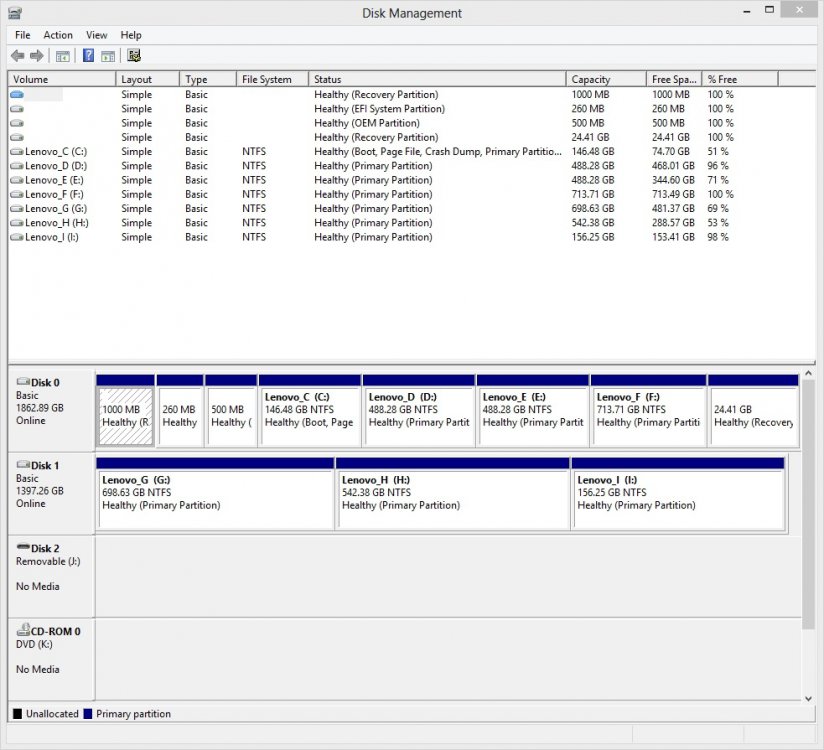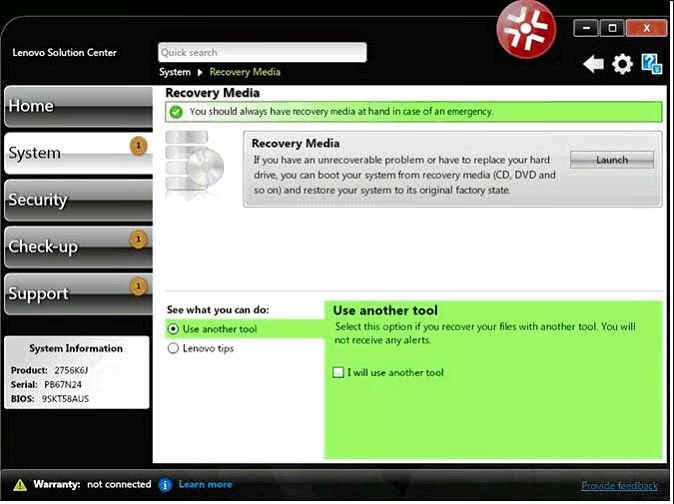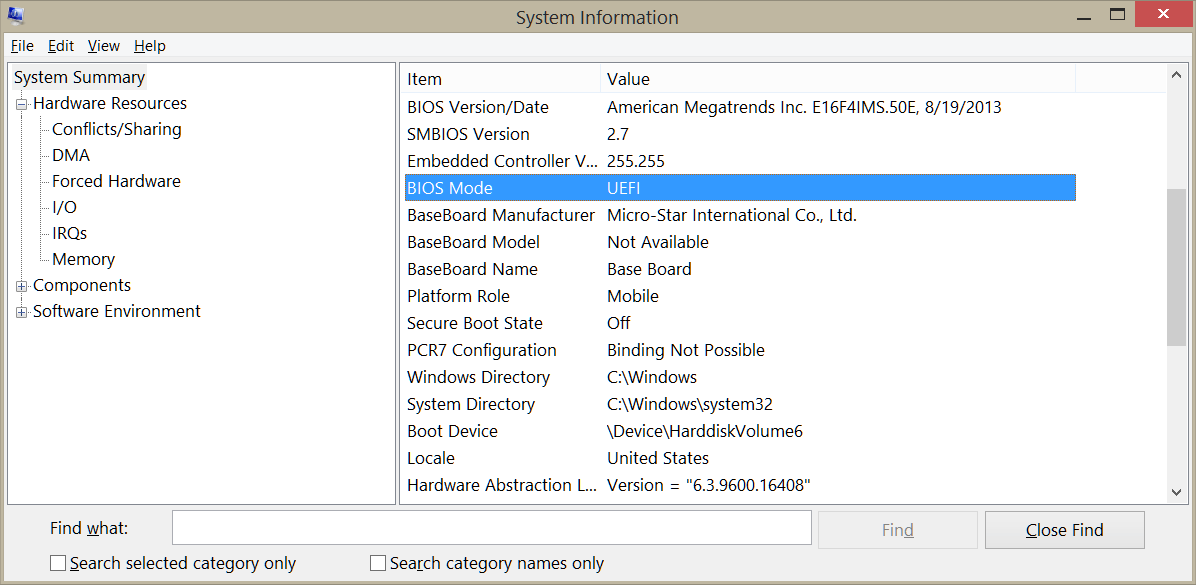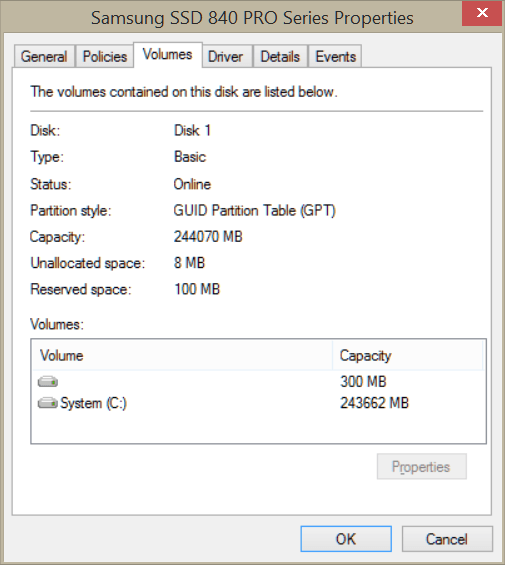

- Messages
- 2,890
- Location
- Space coast of Florida
I have a Kingston SSDNow V200 128 GB SATA III 6 GB/s 2.5-Inch SSD I was using on my old Dell Precision 370. I now have a new Lenovo IdeaCenter K450 running Windows 8 X64 and I want to install the SSD in it.
This is what the drives look like now:

I want to clone the 1st 4 partitions plus the C: partition. I can reduce the size of my existing C: so everything will fit on the 128GB SSD. Anything I need to watch out for? I would think that cloning the existing setup should work. I will connect the SSD to the lowest SATA port, where the 2TB drive is now and move the other two drives up by one SATA port.
This is what the drives look like now:

I want to clone the 1st 4 partitions plus the C: partition. I can reduce the size of my existing C: so everything will fit on the 128GB SSD. Anything I need to watch out for? I would think that cloning the existing setup should work. I will connect the SSD to the lowest SATA port, where the 2TB drive is now and move the other two drives up by one SATA port.
My Computer
System One
-
- OS
- Windows 10 Pro X64
- Computer type
- PC/Desktop
- System Manufacturer/Model
- Lenovo IdeaCenter K450
- CPU
- Intel Quad Core i7-4770 @ 3.4Ghz
- Motherboard
- Lenovo
- Memory
- 16.0GB PC3-12800 DDR3 SDRAM 1600 MHz
- Graphics Card(s)
- Intel Integrated HD Graphics
- Sound Card
- Realtek HD Audio
- Monitor(s) Displays
- HP h2207
- Screen Resolution
- 1680x1050@59Hz
- Hard Drives
- 250GB Samsung EVO SATA-3 SSD;
2TB Seagate ST2000DM001 SATA-2;
1.5TB Seagate ST3150041AS SATA
- PSU
- 500W
- Keyboard
- Wired USB
- Mouse
- Wired USB
- Internet Speed
- 3GB Up, 30GB Down
- Browser
- SeaMonkey
- Antivirus
- Windows Defender; MBAM Pro
- Other Info
- UEFI/GPT
PLDS DVD-RW DH16AERSH








